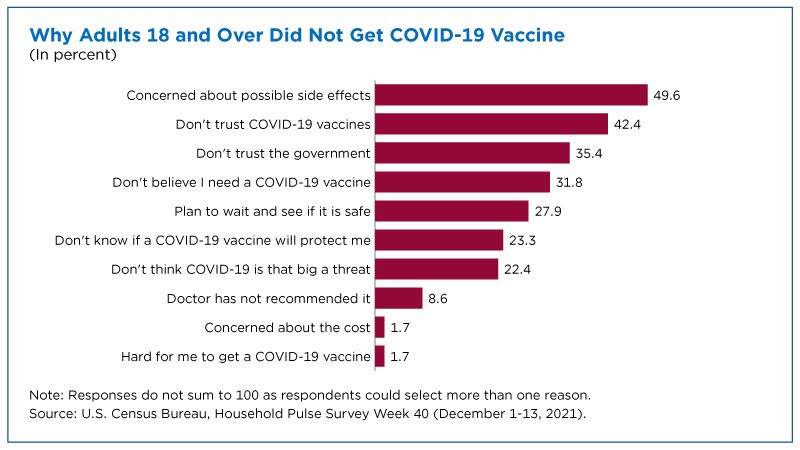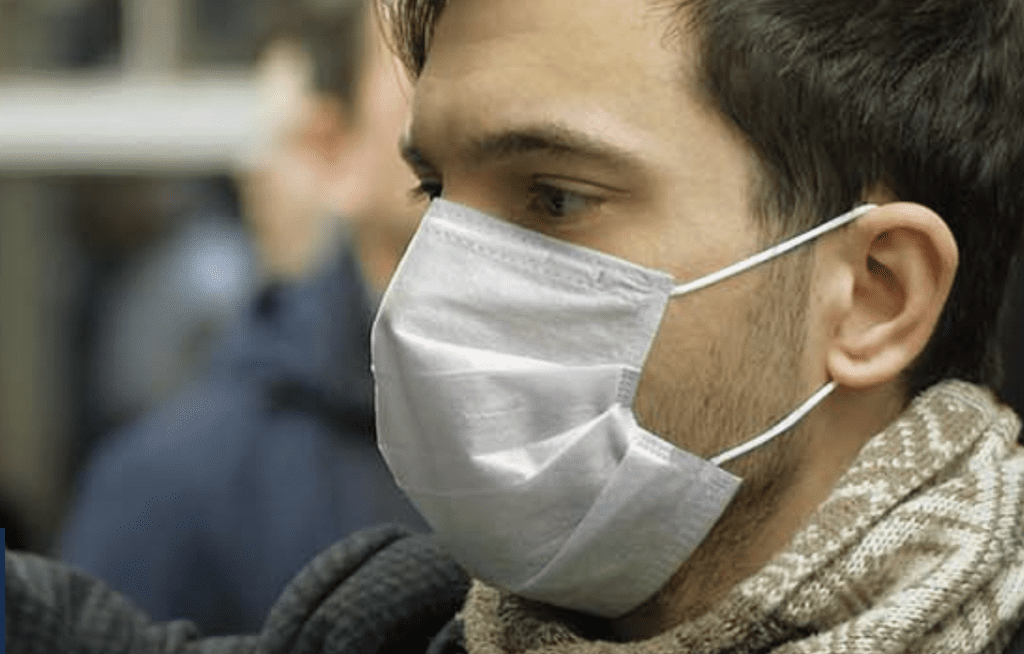Search Posts
Recent Posts
- Rhode Island Weekend Weather for April 20/21, 2024 – John Donnelly April 20, 2024
- Westerly to complete more resilient and people-friendly Main St. streetscape with $300K award April 20, 2024
- In the News… quick look for week ending April 20th April 20, 2024
- WaterFire scheduled announced for 2024 April 20, 2024
- Burn with Kearns: Ignite Your Transformation: Join the 90-Day Fitness Challenge! – Kevin Kearns April 20, 2024
Categories
Subscribe!
Thanks for subscribing! Please check your email for further instructions.

Part 1 – Who Are the Unvaccinated?
Household Pulse Survey shows many don’t trust the COVID vaccine, and worry about side effects. At this point resistance and hesitancy appear to be solidly held positions. Those who seek to change those positions and vaccinate more should understand the data that shows who needs to be reached.
Tomorrow, in Part 2 – we look at the role of marketing and psychology and how the messages about vaccination may have gotten it all wrong to reach those they want to reach the most.
Today – we look at the data that we have on who are the unvaccinated.
Reprinted from a story in the US Census by Lindsay M. Monte December 28, 2021
The Centers for Disease Control and Prevention (CDC) reports that as of December 14, roughly 85% of adults ages 18 and over in the United States had received at least one dose of a COVID-19 vaccine but 15% remained unvaccinated.
Who are the unvaccinated and why are they choosing not to get a COVID vaccine?
About 42% reported that they “don’t trust the COVID-19 vaccine.”
According to the U.S. Census Bureau’s newest phase of the experimental Household Pulse Survey (HPS), those who were unvaccinated against COVID in early December 2021, reported a variety of reasons why.
“Vaccinated” here refers to adults who have received at least one dose of any COVID vaccine, and “unvaccinated” refers to adults who have not received any.
Unvaccinated adults who responded to the survey could select more than one reason:
- About half reported that they were concerned about possible side effects of the vaccine.
- About 42% reported that they “don’t trust the COVID-19 vaccine.”
- Less than 10% reported that they hadn’t gotten the vaccine because their doctor had not recommended it.
- About 2% reported not getting the vaccine because of difficulty obtaining it.

The findings are based on the first data from Phase 3.3 of the HPS. These data were collected Dec. 1-Dec. 13 and released last week.
HPS Phase 3.3 is the latest update to the Census Bureau’s experimental data collection effort to measure the impact of the COVID-19 pandemic on U.S. households.
The new version of the questionnaire is set to continue into February 2022.
For adults 18 and over, a previous question about plans for receiving all required COVID-19 vaccinations was replaced with one focused on the specific number of vaccinations received. There is also a new question about vaccine brands.

Unvaccinated Adults are Younger, Less Educated
Adults who had not received any doses of the COVID vaccine differed from those who had received at least one dose of a COVID vaccine across several measures.
- They were younger, on average, than those who had been vaccinated. Roughly 75% of the unvaccinated were under age 50. Among the vaccinated, less than half were under age 50.
- They had lower levels of education, on average, than those who were vaccinated. Survey respondents who had received at least one dose were twice as likely as the unvaccinated to have a college degree or higher.
- They were much less likely than vaccinated adults to be married (46% vs 56%).
Racial and Ethnic Differences
The share of unvaccinated non-Hispanic White adults was not different from the share who were vaccinated. The same was true for Hispanic adults.
But non-Hispanic Black adults were slightly more represented among the unvaccinated (13%) than the vaccinated (11%), a small but statistically significant difference.
There were notable differences for the Asian population, however: 6% of the vaccinated were non-Hispanic Asian but only 1% of the unvaccinated were non-Hispanic Asian.
Who Are the Hard-to-Reach?
Most of the HPS response options are either about information (“Don’t know if it will protect me”) or trust (“Don’t trust the vaccine”).
However, one involves access: “It’s hard for me to get a COVID-19 vaccine.”
Who are the people in the small subset of adults who responded to the HPS who reported that they had not gotten a vaccine because it was hard to get?
Compared to all HPS respondents, the hard-to-reach:
- Were more likely to be non-White.
- Were less likely to be married (35% of the hard to reach were married compared to 54% of all respondents).
- Had lower levels of education, on average, and were more economically disadvantaged; about half of this hard-to-reach population reported difficulty meeting expenses in the week prior to the survey.
- Were much more likely to report a disability. The HPS asks about difficulty seeing, hearing, remembering or walking or climbing stairs. Those who reported being unvaccinated because they had no access to the vaccine were almost twice as likely to report either complete impairment or “a lot of difficulty” with one or more of these measures than the general population.
About the Data
Approximately 1,044,000 housing units were selected from the sampling frame for this HPS collection period, and approximately 61,000 respondents answered the online questionnaire. Their responses were the basis of this analysis.
The Household Pulse Survey was launched in April 2020, to quickly and efficiently gauge the impact of the coronavirus pandemic on households.
Over the course of 40 collection cycles, HPS data were disseminated in near-real time to inform federal and state response and recovery planning.
The data collected enabled the Census Bureau to produce statistics at the national and state level and for the 15 largest Metropolitan Statistical Areas.
More information is available on these HPS pages: Household Pulse Survey tables, Technical Documentation and Public Use File (PUF) microdata.
Part 2 – tomorrow: what we know about changing perception and changing behavior – the role of marketing in impacting vaccine hesitancy.
